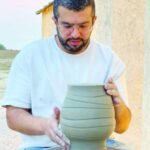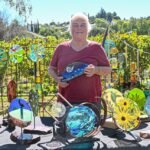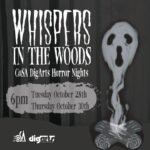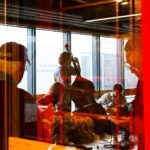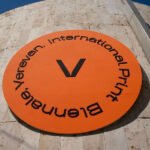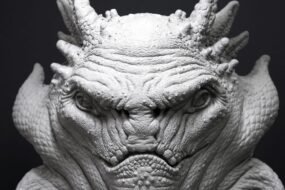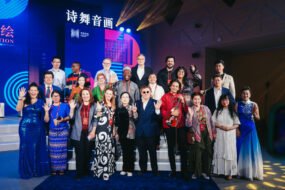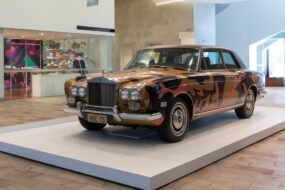The usually quiet Krannert Art Museum was alive with music reverberating through its galleries on Saturday, thanks to the Improvisers Exchange ensemble’s Sonic Location performance, held from 1-3 p.m.
Led by Jason Finkelman, artistic director of the University’s Global Arts Performance Initiatives and professor in FAA, the ensemble traversed the gallery improvising music in response to the surrounding artwork.
Finkelman began the ensemble in 2017 as part of his annual initiative for the Center for Advanced Study. The sonic location project stemmed from a teaching exercise during the COVID-19 pandemic, when gathering was limited, and grew from there.
Finkelman stressed that improvisation is a skill that can only be learned through experience.
“I don’t go to students and say, ‘I’m going to teach you how to improvise.’ I offer possibilities and situations in which we are creating music collectively,” Finkelman said. “They have to learn from those experiences, in the classroom, on the stage, in the public sphere and in their own practice.”
The ensemble began at the front of the museum, improvising as a unit before breaking off into trio, duo and solo performances across the museum’s galleries. Each performer spent a few minutes in each gallery creating music in response to the art. They took turns sitting on the different interactive pieces, coming together and breaking apart as the music moved them.
Finkelman said that “everything is completely spontaneous.” The musicians followed a rough, written score for the performance. It indicated which galleries they would stay in and for how long. However, the entire performance in terms of key and rhythm was completely improvised at the concert.
“I think that these types of scores are roadmaps that you can go on a detour if you’d like,” Finkelman said. “It’s just a framing to keep (the Sonic Location performance) as a cohesive event.”
Patrons could trail any musician or group of musicians throughout the performance, following the sound of their music across the galleries.
“I think that those who come to see the performance come to ‘expect the unexpected,’ to not know exactly what is going to happen,” Finkelman said.
The performers would sit in silence for a few minutes at times, tuning into the sound of their fellow performers around them and preparing their next piece. They would then play according to the piece of artwork they were looking at, following cues from one another. At one point, a group even broke into song, which Finkelman said was completely unexpected and “really beautiful.”
Each musician took a turn at the electric keyboard in the museum’s Rest Lab, where they would form larger groups periodically throughout the performance. The musicians would switch between instruments stored in the museum’s cafe as they saw fit, sometimes taking breaks from performing.
At the end of the performance, the ensemble came back together for a final improvised song, sitting staggered across the Quevedo Sculpture.
Jess Mingee, a graduate student studying agricultural and biological engineering, said that for them, improv is a meditative experience. Before joining the ensemble, Mingee had only ever played music in a classical setting. Improvisers Exchange became a way for them to step out of their comfort zone and learn new things.
“It’s a chance to understand your own musical voice and what fulfills you,” Mingee said.
The day before the event, the ensemble did a “sound walk,” exploring the different sounds around campus and attempting to connect with them and channel them into music. Additionally, before the start of the performance, the musicians had a chance to observe the artwork and learn about its artists, their history and their inspiration for the art.
“To me, improv is about connecting with other people, so I’m listening to the sounds around me and just letting whatever wants to come out happen, trying not to think too hard about it,” Mingee said.
Rob Bennett, instructional technology facilitator in Engineering, shared similar sentiments about performing. Bennett said he has experience playing in many different avenues of music, including jazz, rock and cover bands, but said none of them require as much of an open mind as improv.
“I try to get as much out of my head as possible,” Bennett said. “I basically try to tune in to what’s going on with my fellow musicians.”
Overall, Finkelman said that the art of improvisation serves as a tool for his students to utilize. Whether the student has a background in jazz, classical or otherwise, he believes improv can help teach them new things within their discipline.
Patrons who wish to see Improvisers Exchange perform can do so every first Monday of the month at the Rose Bowl Tavern from 5:30-7:30 p.m. The second half of their set features a segment where they will invite audience members to improvise alongside them.

